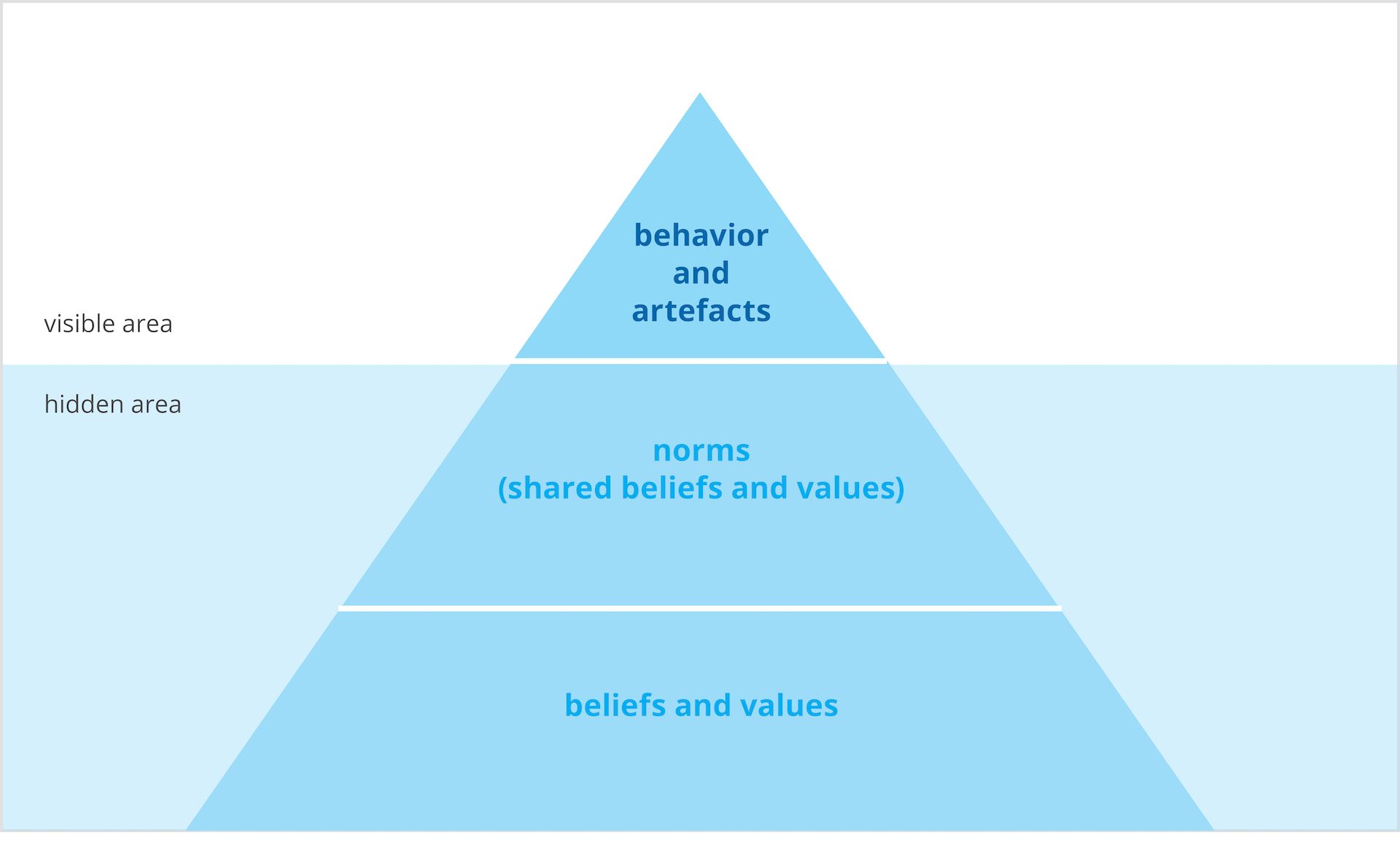Innovation culture
What do we mean by ‘culture?’ A useful working definition of culture is simply ‘the way we do things around here’ – the assumptions and beliefs which we share and which shape the way we behave inside our organizations. The trouble is that ‘culture’ is a notoriously slippery concept – what does it mean exactly, and, more importantly, how do we work with it and change it?
LEVELS OF CULTURE
Professor Edgar Schein offers a helpful model for thinking about the way culture 'happens' in organizations.
Cultures don't just happen – they are built up hierarchically. At the base, we have our values and beliefs – the things which matter to us and shape the way we think about the world. We share these with others and arrive at some common views – norms – which we agree on and which we then use to shape how we behave alongside each other in our organizations. Over time, these patterns of behavior become routine, embedded in the way we do things around here. Eventually, they become ‘hard-wired’ into the organization in its processes and procedures, its rules and structures. Schein calls these visible expressions of culture ‘artifacts.’

It’s a useful model. Even though we have never met an ancient Egyptian citizen, we can do a pretty good job of reconstructing the way they lived and how their society worked by looking at the artifacts they left behind. Pictures on the walls of pyramids, the items they valued enough to have buried with them, the gods and goddesses which they worshiped – even the pyramids themselves.
It’s the same with organizations; we can infer a lot about their underlying beliefs and behavior by looking at the artifacts. Status symbols, organization charts, rules and procedures for getting things done – they all tell us a lot about how the organization works and the underlying beliefs of the people who choose to work in it.

Figure 5: Schein's iceberg model
An important part of any organization’s culture is the way it handles the idea of innovation. We’d expect to see structures for creating ideas and developing them into something which creates value. There would be reward and recognition systems in place, measurement frameworks, resource allocation rules, all sorts of things to enable innovation to happen. People working within this system would behave in particular ways, reflecting their shared belief about innovation.
The technical term for these innovation behavior patterns is 'routines' – and they are a bit like the genetic code which provides the program's structure on how the organization behaves. And just like DNA, these routines – such as how we search for ideas, how we make choices about which ones to back, and how we manage the development and launch process – are specific to each organization.
So what are the routines, the behavior patterns which we’d associate with successful HII? What 'genes' are needed for success – and can we take a cue from genetic engineering and splice in some new ones to help us strengthen our HII?
To answer this question, we need to remember that HII is not a binary state – either on or off. HII is something which takes time to evolve but can pay long-term strategic dividends. So we are really looking at a 'maturity models,' embedding and developing the key behaviors and learnings, and strengthening and extending them over time.
"HII is something which takes time to evolve but can pay long-term strategic dividends."
We can imagine a simple staircase model through which organizations learn to use collaboration platforms effectively.
So what constitutes the set of behaviors – the culture – we associate with each of these levels in the model? What would we see, hear, and notice in an organization operating at a particular level? Using the Schein approach, we can begin to characterize different levels in terms of the underlying beliefs, behaviors, and artifacts.
ROME WASN'T BUILT IN A DAY
Although we might all aspire to such a culture, the reality is that it doesn’t happen by accident. We must build it from the bottom up and based on learning and experimenting with new ways of working. Figure 6 shows the step-by-step development towards a high-involvement culture, and it describes what we could call a ‘maturity model’ – a roadmap for how high-involvement innovation might develop in an organization.
For each level of maturity – each step on the staircase – there are several things we might expect to see.
Click one of the five levels to read the full explanation.
These are, of course, sketches, caricatures – but they do highlight some of the differences between levels in terms of capability to organize for high involvement innovation.
Let’s look a little more closely – within each of these levels, what are the key dimensions and behaviors we might expect to see?
Click the buttons below for a detailed look on Behaviors, Routines, and Artifacts per level.















